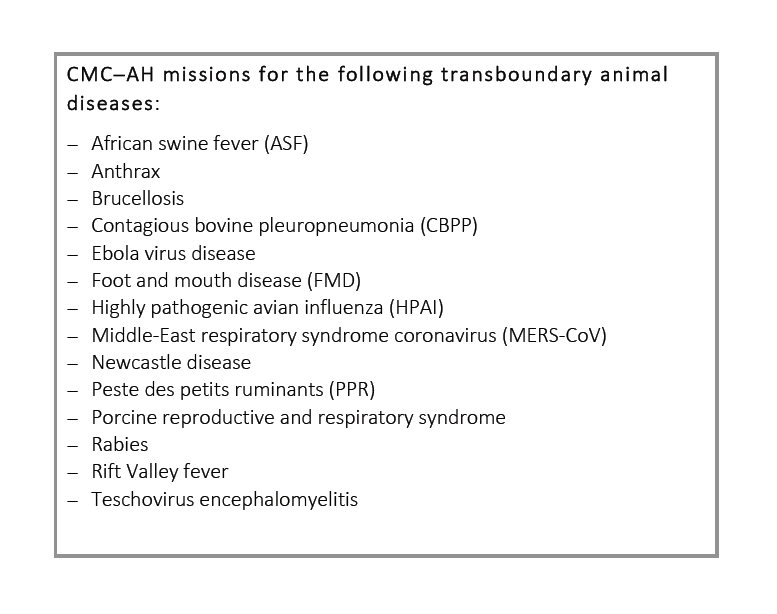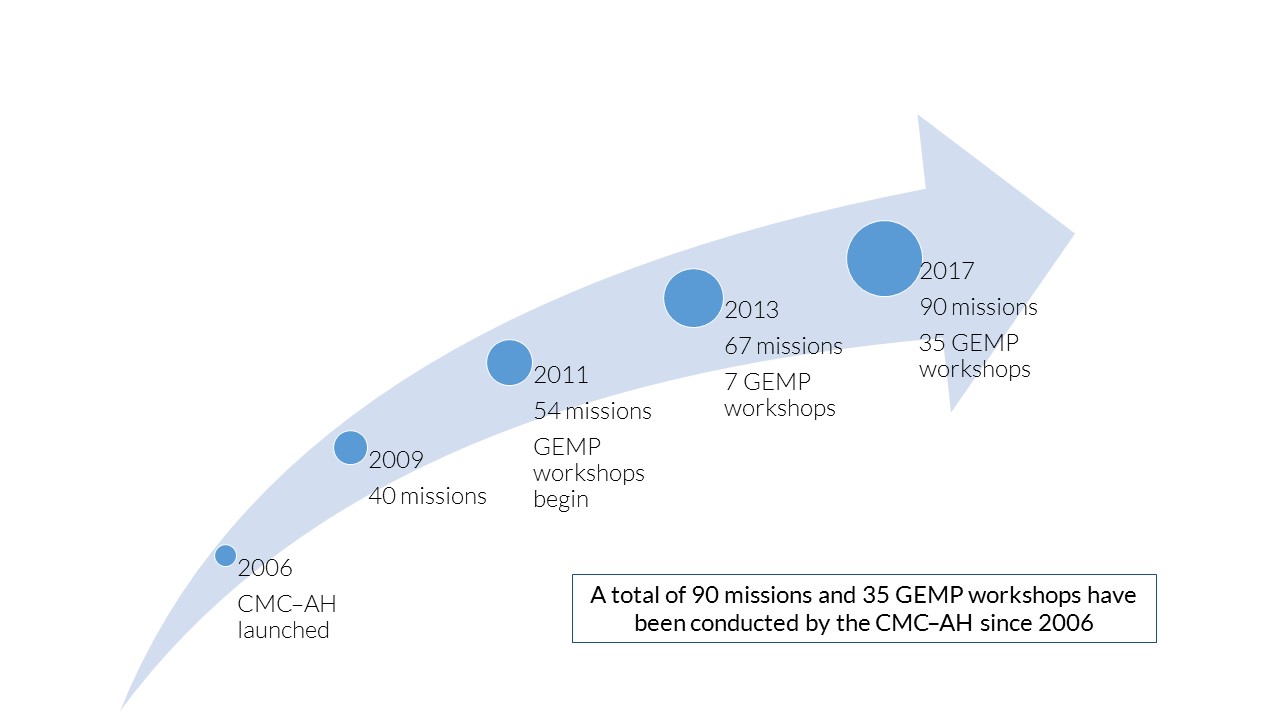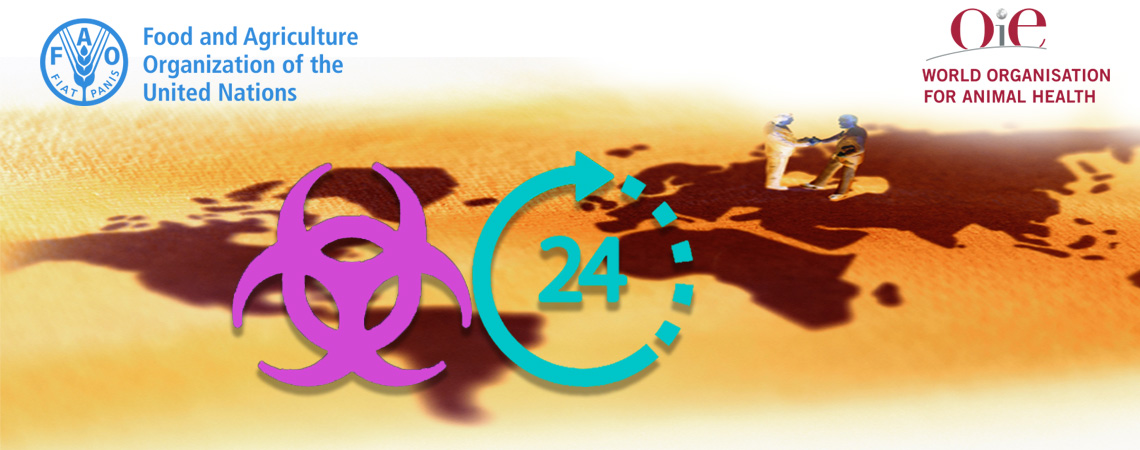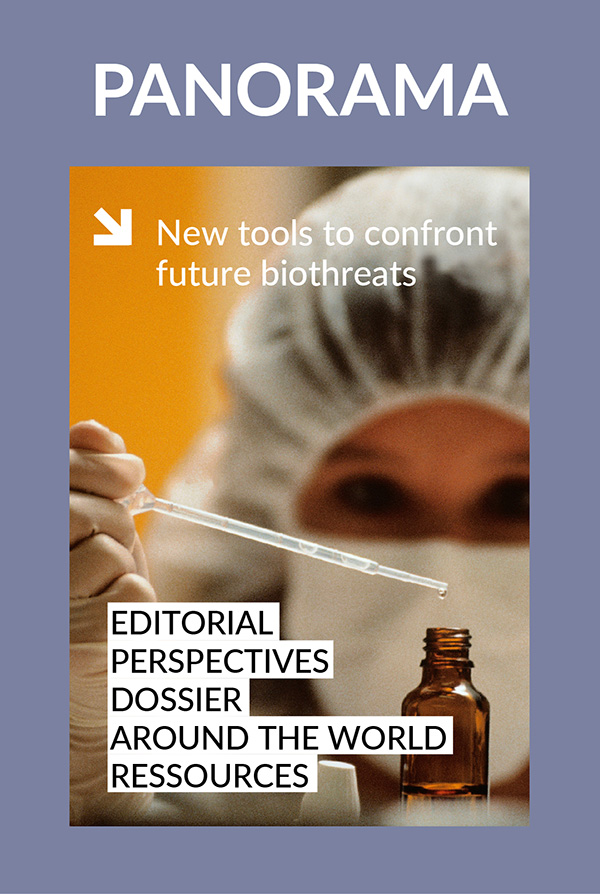Around the world Posted on 2018-10-22 17:17:35
Network initiatives
The Emergency Management Centre for Animal Health
Building on past success to meet the needs of the future
Keywords
Authors
L. Myers (1)*, K. Hamilton (2), E. Bonbon (1), C. Ingabire (1), V. DiStefano (1), E. Raizman (1) & J. Lubroth (1)
(1) Food and Agriculture Organization (FAO) of the United Nations, Rome, Italy
(2) World Organisation for Animal Health (OIE), Paris, France
* Corresponding author: Lee.Myers@fao.org
The views expressed in this publication are those of the author and do not necessarily reflect the views of the Food and Agriculture Organization of the United Nations. Also the designations employed and the presentation of material in this information product do not imply the expression of opinion whatsoever on the part of the Food and Agriculture Organization of the United Nations concerning the legal status of any country, territory, city or area or of its authorities, or concerning the delimitation of its frontiers or boundaries. Content and errors are exclusively the responsibility of the author.
The Crisis Management Centre for Animal Health (CMC–AH) was first launched in 2006 at FAO Headquarters, Rome, in partnership with the OIE. The Centre filled a gap, becoming a global resource for rapid intervention and assistance in high-impact animal disease outbreaks. More specifically, it plays a vital role as a mechanism for rapidly deploying expert teams to Member Countries.
The CMC–AH was initially established in response to the global outbreaks of highly pathogenic avian influenza H5N1. As global priorities changed, its mandate was expanded to include other high-impact animal diseases, including zoonoses. The CMC–AH works in complementarity with joint FAO/OIE mechanisms, including the Global Network of Expertise on Animal Influenza (OFFLU) and the tripartite Global Early Warning System (GLEWS) (with the World Health Organization), and supports the strategies of both the FAO and OIE. The CMC–AH also promotes OIE standards and country obligations in its intervention and implementation strategies.
The world must be prepared to prevent and mitigate, detect, respond swiftly to and recover from high-impact animal diseases and zoonotic emergencies
Within FAO, the CMC–AH operates as a joint platform for the Divisions of Animal Production and Health (AGA), and Emergency and Rehabilitation (TCE). The CMC–AH supports AGA to strengthen veterinary systems, improve livestock production practices and enhance policies to improve the sustainability and stewardship of the livestock sector, in order to reduce hunger and poverty. The CMC–AH supports TCE with its humanitarian efforts to avert food and agricultural threats and crises, and strengthen the resilience of agricultural livelihoods.
The CMC–AH has provided emergency response support during a variety of aquatic and terrestrial animal disease events in Member Countries over the past decade. Recipients consistently reported tangible benefits from CMC–AH emergency response missions, which were often followed by FAO technical cooperation projects and OIE capacity-building tools, provided under the PVS Pathway, or other projects to enable the implementation of the mission’s recommendations. CMC–AH missions are also supported by data from OIE PVS Pathway missions and the OIE’s World Animal Health Information System. In 2011, the CMC–AH expanded its role into emergency preparedness to address the needs of countries by providing guidance and training through Good Emergency Management Practice: The Essentials.


The demand for animal health services and the management of animal diseases (including emerging diseases and zoonoses) continues to evolve, and CMC–AH recognises its role in meeting the changing needs of stakeholders. Forces that drive these changes include, among others: the global demand for upstream interventions, a seamless One Health approach, effective incident coordination of information and resources, and preparations for the potential deliberate use of biological agents as weapons.
In this evolving global context, the CMC–AH decided to modernise. It developed a strategic action plan that would result in a more holistic and sustainable platform for global animal health emergency management. Building on the Centre’s first ten years of success, and following the recommendations of the CMC–AH Steering Committee, the strategic action plan clearly details the path forward, and activities for the next five years.
To reflect this future, the CMC–AH rebranded itself in February 2018 as the Emergency Management Centre for Animal Health (EMC–AH)
The new EMC–AH intends to broaden its assistance to Member Countries to include activities at all stages of emergency management: i.e. preparedness, prevention (and mitigation), detection, response and recovery. The EMC–AH also intends to enhance its collaborative links to work more effectively and efficiently with other mechanisms, networks and tools of the OIE, WHO and other multisectoral partners. However, capacity-building for emergency preparedness and rapid response to emergencies will remain its core functions.
The world must be prepared to prevent and mitigate, detect, respond swiftly to and recover from high-impact animal diseases and zoonotic emergencies, whether naturally occurring or accidentally or deliberately induced, if we are to protect livelihoods and ensure food security in a sustainable manner. The EMC–AH is at the forefront of this challenge, and remains committed to enhancing country, regional and international resilience in animal health and zoonotic disease emergency management.
http://dx.doi.org/10.20506/bull.2018.1.2773












